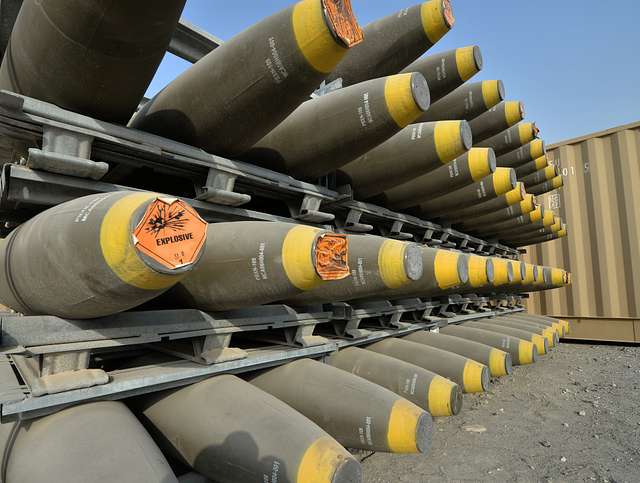The European Arms Industry is Booming – Literally
The defence sector is experiencing major growth, but who are the biggest winners?

The latest defence industry figures indicate that the arms manufacturing sector is burgeoning with even more room for expansion as countries look to bolster their defences.
Unfortunately, much of the growth in arms manufacturing has come from the necessary transferal of weapons from European countries to Ukraine to aid in its ongoing defence against Russia. In fact, Ukraine’s ammunition and military hardware needs accounted for 23% of Europe’s total defence outlay from 2019 until 2023. While the next biggest defence spending came from the UK, which accounted for 11% and the Netherlands with 9% of all European arms imports.

The data, provided by the Stockholm International Peace Research Institute (SIPRI), also shows that, “European countries have nearly doubled their arms imports between 2014-2018 and 2019-2023, boosting their purchases by 94% in the period observed.”
“Most European countries are increasing their military expenditure,” said Lucie Béraud-Sudreau, director of SIPRI’s military expenditure and arms production programme, who highlights data showing that Europe’s defence spending rose by 13% last year.
Part of this was due to the renewed plans by NATO members to adhere to the minimum national defence spending of 2% of GDP. However, it was not until Russia’s invasion of Ukraine that defence ministers began to revisit how their countries could defend themselves against attack.
Until then, notes Sejal Varshney, an analyst at European equity research firm AlphaValue, “… nobody imagined there would be another traditional war.”

While some of Europe’s arms imports came from Asia and the Middle East, 55% of sales came from the US, which saw a 35% jump in exports compared to the previous four-year period measured.
“Many factors shape European NATO states’ decisions to import from the USA, including the goal of maintaining trans-Atlantic relations alongside the more technical, military and cost-related issues,” observed Dan Smith, the SIPRI Director. “If trans-Atlantic relations change in the coming years, European states’ arms procurement policies may also be modified.”
However, America is not alone in expanding its arms manufacturing output, with most nations putting in greater effort to produce munitions either to refresh their own stockpiles or for export to Ukraine and beyond. Most notably, France has increased its arms exports by 47% over the time frame studied, although a large part of that increase came from major orders for combat aircraft to India, Egypt, and Qatar.
Nonetheless, such was the rise sales from France that it has become the second largest arms exporter in the world, replacing Russia which saw its arms exports drop by 53%.
“France is using the opportunity of strong global demand to boost its arms industry through exports,” said Katarina Djokic, a researcher at SIPRI.
Exceptional arms sales were also experienced by Italy, with an 86% increase over the previous three years, and South Korea which saw a 12 % rise. Meanwhile, arms shipments from China decreased by 5.3%, and also went down in Germany and the UK (both by 14%), Spain (2.2%) and Israel (25%).
Notably, the top three European defence companies were BAE Systems (UK), Leonardo (Italy) and Airbus (trans-European).

Overall, the outlook for the defence industry looks positive, building on the 3.7% global expenditure growth in real terms to a record high of $2.24 trillion.
“For example,” reports EuroNews, “one year ago, German media reported that the country only had ammunition for one or two days of war, against the standard stock recommendation for 30 days of high-intensity combat.”
Since then, the wars in Ukraine and Gaza have refocused minds on the primary role of governments – to provide national security. Consequently, Europe cannot now build as much ammunition as it and its allies need.
“European demand for artillery and ammunition now far exceeds the supply,” states Varshney, while also noting that, “The war chests in Europe are empty.”
What will happen to the European defence industry then? Only time will tell.
You may also enjoy: Defence Industry Looks to Secure ‘Friendlier’ Raw Material Supplies
Photo credit: Picryl, Wikimedia, Picryl, & Boudewijnhuijgens

